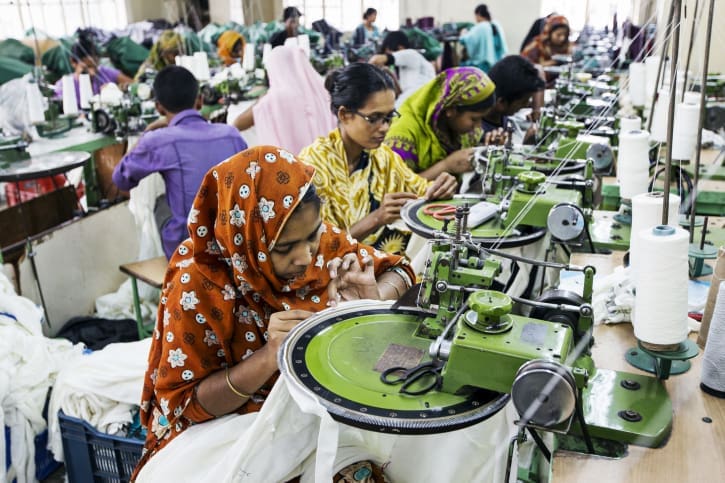In the bustling metropolises and rural towns of Bangladesh, millions of skilled hands toil in obscurity, weaving the fabric of the global fashion industry. These individuals work silently in the heart of garment factories, bearing the responsibility of producing the clothes that drape our bodies, while their own stories remain largely unheard. “Stitched in Silence: Stories of Bangladesh’s Factory Laborers” delves deep into a realm frequently disregarded, offering a thought-provoking journey into the lives rarely noticed but significantly influencing the global fashion panorama.
This collection of narratives delves into the challenges and resilience of Bangladesh’s garment workers, unveiling their dreams, struggles, and aspirations. It invites us to recognize the individuals who have long remained invisible in the supply chain, emphasizing the importance of acknowledging and valuing their contributions.
The Ready Made Garment (RMG) industry in Bangladesh has seen significant growth since the 1980s and has become the lifeline of the country’s economy. It provides jobs for approximately four million people, with a majority being women workers. However, behind the surface lies a harsh reality. Young women often face long working hours, low wages, cramped spaces, and precarious safety conditions in the garment factories. The concept of weekends and holidays is foreign to them as they labour to meet production quotas set by factory owners, who in turn cater to international fashion brands.
Wages are a contentious issue, with the minimum wage often falling short of meeting the basic needs of workers and their families. Safety concerns loom large, with inadequate safety measures still prevalent in many garment factories. The Rana Plaza disaster in 2013, which claimed the lives of more than a thousand people and exposed the dire working conditions in the industry, triggered protests and calls for reform.
Child labour is a critical issue faced by garment workers in Bangladesh, besides the difficulties of low wages and hazardous working conditions. Many children are compelled to work because of severe economic circumstances.
To combat these issues, there is a pressing need for multinational companies to take responsibility and ensure safe working conditions and fair wages for their supply chain workers. The government of Bangladesh should strengthen labour laws, and international organizations should continue to advocate for change and support workers’ rights.
The Rana Plaza disaster led to increased scrutiny of international fashion brands that source their products from Bangladesh, with some brands pledging to improve the safety of their supply chains. The Accord on Fire and Building Safety in Bangladesh was an important step in this direction, aiming to ensure the safety of workers in the garment industry.
Although some progress has been made in enhancing safety and labour circumstances, there are still considerable obstacles to surmount. Bangladesh’s garment workers persistently display resilience and optimism as they strive for improved working conditions and equitable treatment.
It is our moral duty to stand up for these workers and work towards a future where they can lead dignified lives free from exploitation and suffering. Holding both brands and governments accountable for their commitments is crucial to ensure that the garment industry in Bangladesh and beyond becomes a place where hardworking individuals who stitch our clothes can do so in safety, dignity, and fairness.
In conclusion, “Stitched in Silence: Stories of Bangladesh’s Factory Laborers” sheds light on the hidden world of garment workers in Bangladesh, inviting us to recognize their contributions while highlighting the challenges they face. The industry’s growth has had a significant impact on the country’s economy, but it has also sparked issues related to low wages, safety concerns, and child labour. Moving forward, multinational companies need to prioritize the safety and well-being of their supply chain workers. At the same time, the government and international organizations must advocate for improved labour laws and workers’ rights. The collective efforts of all stakeholders are necessary to ensure a future where Bangladesh’s garment workers can work in safe and fair conditions.

